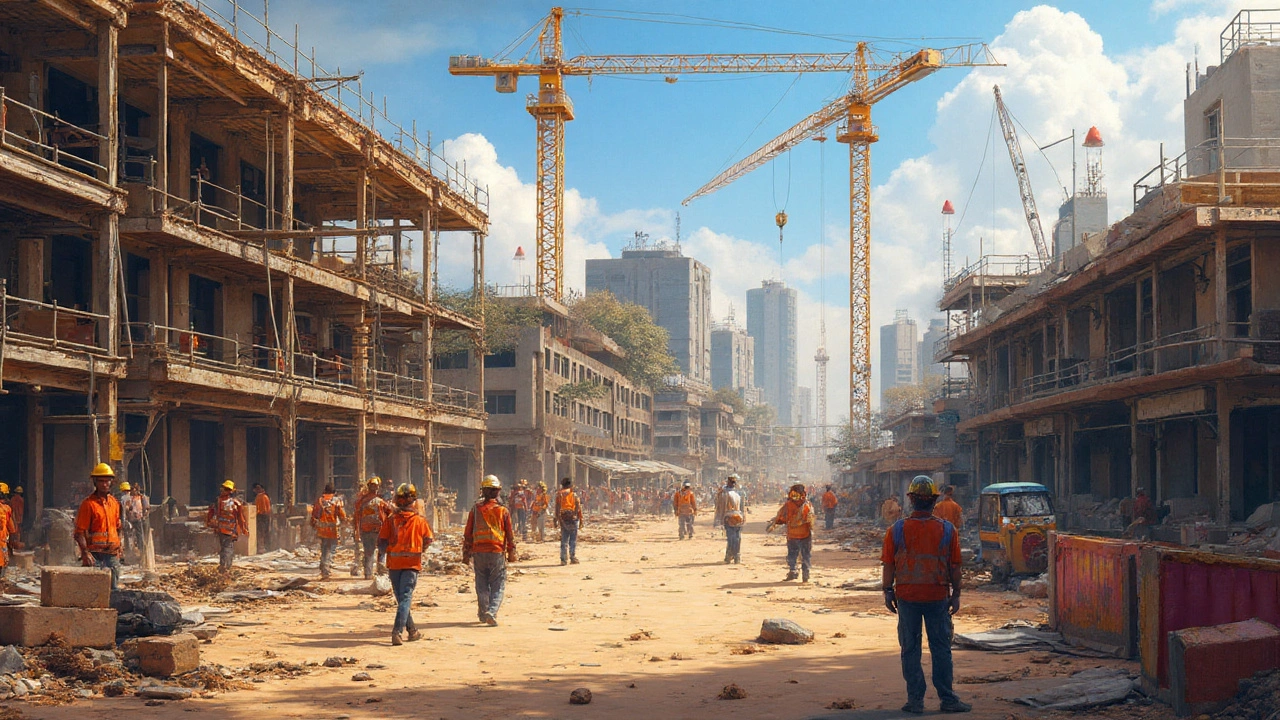Precast Concrete: What It Is, How It's Used, and Why It's Changing Construction
When you see a warehouse, school, or apartment building that looks like it was assembled from giant blocks, you’re looking at precast concrete, concrete elements cast in a controlled factory environment and later transported to the job site for assembly. Also known as precast panels, it’s not just a material—it’s a whole different way of building. Unlike traditional poured concrete that dries on-site, precast concrete is made in a factory, cured under perfect conditions, and shipped ready to install. This means fewer delays from rain, less waste, and structures that are stronger because they’re made without the guesswork of outdoor curing.
It’s not just for big industrial projects. precast concrete, a type of building material used in both commercial and residential construction is now common in everything from parking garages to modular homes. The panels can be made to look like brick, stone, or even wood grain, so you don’t sacrifice looks for speed. And because it’s made off-site, it reduces noise and mess on the job—something contractors and neighbors both appreciate. This method also ties directly into modern construction trends like off-site manufacturing and sustainable building, since factories reuse molds, recycle water, and cut material waste by up to 70% compared to site-poured methods.
What makes precast concrete stand out? It’s the precision. A single wall panel can weigh several tons but fit together like a puzzle with millimeter accuracy. That’s why you’ll find it in hospitals, data centers, and schools—places where structural reliability matters. It’s also fire-resistant, sound-deadening, and holds up against extreme weather. In commercial construction, where time is money, precast lets teams finish foundations and walls in days instead of weeks. And because it’s made ahead of time, you don’t need to wait for weather or concrete trucks to show up.
You’ll also see it linked to other building methods like tilt-up construction and modular design. Tilt-up uses large precast panels lifted into place with cranes, while modular buildings are made of entire rooms or sections built off-site and stacked together. Both rely on precast concrete for strength and speed. And if you’ve ever wondered why some new buildings look so uniform and clean, it’s often because they’re built from factory-made components—not hand-mixed concrete.
There’s a reason this isn’t just a niche technique anymore. From the UK to Texas, builders are switching to precast because it cuts costs, reduces risk, and delivers consistent quality. You’ll find real-world examples in posts about commercial construction types, foundation repair, and even new build companies—because if you’re building something that needs to last, precast concrete is one of the smartest choices you can make.
Below, you’ll find real guides and breakdowns from builders and engineers who’ve used precast concrete on actual projects—covering costs, installation tricks, code requirements, and how it stacks up against other materials. No theory. Just what works on the ground.
Top Methods of Commercial Construction Explained for Modern Businesses
Explore the main methods of commercial construction, from steel frame to modular builds. Learn how businesses choose the best techniques and why it matters.
Learn more...